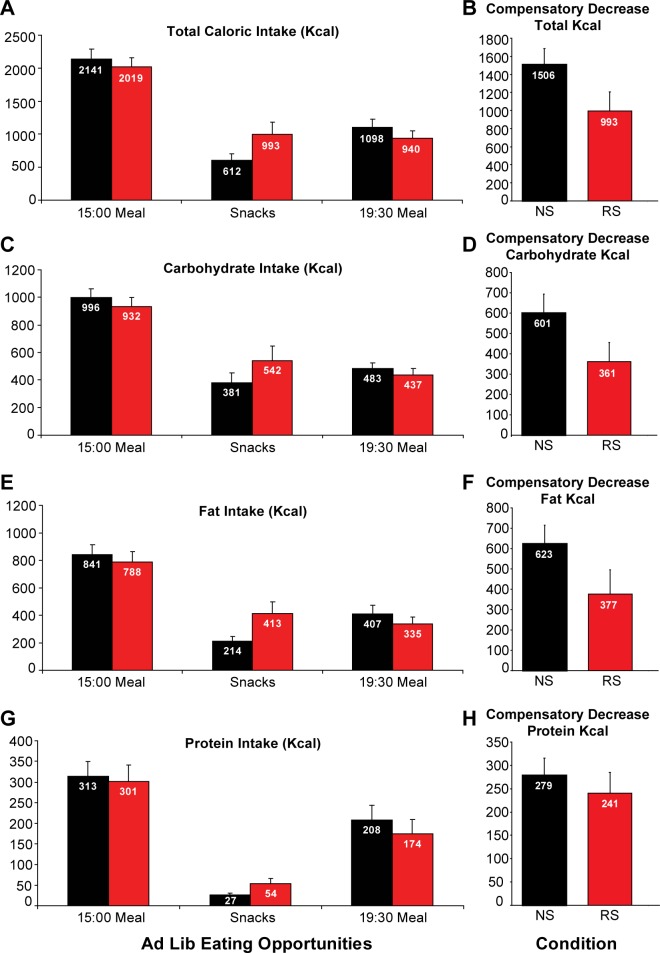Figure 5.
Caloric intake for each of the ad libitum (ad lib) eating opportunities in the 8.5 h in bed (black) or in the 4.5 h in bed (red) conditions. Eating opportunities included a 15:00 and a 19:30 meal (n = 14), and an intervening period where palatable snacks were presented (n = 13). Data shown are mean (± standard error of the mean). Horizontal panels present Kcal intake for each eating opportunity (left) and compensatory decrease in snack intake after consumption of the 15:00 meal (right) for each sleep condition (back bars: normal sleep; red bars: restricted sleep). From top to bottom: total caloric intake (A,B), carbohydrate intake (C,D), fat intake (E,F), and protein intake (G,H). Please note the difference in eating patterns between the two conditions; in the normal sleep (NS) condition there is a rebound in intake during the dinner meal, however there is no large increase in dinner intake following snack consumption in the RS (restricted sleep) condition. This lack of increase in dinner meal from snack intake is due to high kcal intake during the snack opportunity in the RS group.

